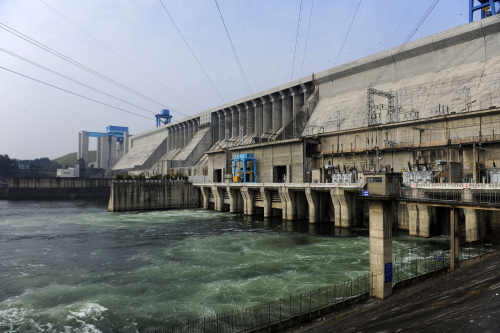|
 |
|
WATER SOURCE: Danjiangkou Reservoir is the water source for the middle route of the water diversion project. The construction of the reservoir was completed in 1973 (HAO TONGQIAN) |
The south-to-north water diversion project, which has been under construction since the early 2000s, has finally seen the completion of its first phase. People in Beijing and some other dry areas in north China will finally be able to drink water from the Yangtze River.
This project is the largest of its kind in the world and it is designed to take water from the country's longest river to dry areas in the country's north. The project is another gargantuan feat of engineering, in the style of the Beijing-Hangzhou Grand Canal, the longest man-made waterway in the world, constructed in the 13th century to transport grain between the north and south of China.
The project is divided into three routes: eastern, middle and western. The construction of the eastern route started in 2002, with the middle following in 2003. Construction of the western route is yet to begin.
Upon completion, the project is expected to divert up to 44.8 billion cubic meters of water per year to more than 10 provinces and municipalities, benefiting nearly 100 million people. Up to 600,000 jobs are also expected to be created. By 2050, as many as 440 million people will benefit from the project.
Project in function
The project was approved by the State Council in December 2002, after nearly half a century of debate. The affected area covers a vast area of 1.45 million square km, which accounts for roughly 15 percent of China's land. It runs across the watershed of China's four major rivers--the Yangtze River, the Huaihe River, the Yellow River and the Haihe River--with more than 10 provinces, autonomous regions and municipalities involved.
Due to the length of the water diversion line and the large area covered, this effort involves a broad range of engineering techniques, such as the construction of reservoirs, lakes, canals, watercourses, dams, pumping stations, tunnels, aqueducts, culverts, inverted siphons, PCCP pipelines, channels and many more.
The first-stage project of the eastern route went into operation in 2013, sending water to east China's Shandong Province.
The middle route is the most attention-grabbing of the three routes due to its role in feeding water to the national capital. The main canal of the middle route is 1,432 km in length, featuring a 1,196.36-km-long open channel.
The first stage of the middle route aims to pump almost 9.5 billion cubic meters of water--one sixth the volume of the Yellow River--every year to the country's parched north, including more than 20 major cities, through canals and pipes from the Danjiangkou Reservoir, located at the junction of Hubei and Henan provinces.
Beijing is among the northern cities plagued by water shortages. The capital city has per capita water resources of less than 100 cubic meters, far below the 500 cubic meters which is considered an acute water shortage by international standards.
| 